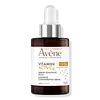What's inside
What's inside
 Key Ingredients
Key Ingredients

 Benefits
Benefits

 Concerns
Concerns

 Ingredients Side-by-side
Ingredients Side-by-side

Water
Skin ConditioningGlycerin
HumectantNiacinamide
SmoothingPentylene Glycol
Skin ConditioningC9-12 Alkane
SolventCaprylic/Capric Triglyceride
MaskingPentaerythrityl Tetracaprylate/Tetracaprate
EmollientAscorbyl Glucoside
AntioxidantBakuchiol
Antimicrobial1,2-Hexanediol
Skin ConditioningAcacia Senegal Gum
MaskingButylene Glycol
HumectantCitric Acid
BufferingCoco-Caprylate/Caprate
EmollientParfum
MaskingGlyceryl Behenate
EmollientGlyceryl Dibehenate
EmollientSodium Citrate
BufferingSodium Dilauramidoglutamide Lysine
HumectantSodium Hyaluronate
HumectantSodium Hydroxide
BufferingTocopheryl Glucoside
EmollientTribehenin
EmollientXanthan Gum
EmulsifyingWater, Glycerin, Niacinamide, Pentylene Glycol, C9-12 Alkane, Caprylic/Capric Triglyceride, Pentaerythrityl Tetracaprylate/Tetracaprate, Ascorbyl Glucoside, Bakuchiol, 1,2-Hexanediol, Acacia Senegal Gum, Butylene Glycol, Citric Acid, Coco-Caprylate/Caprate, Parfum, Glyceryl Behenate, Glyceryl Dibehenate, Sodium Citrate, Sodium Dilauramidoglutamide Lysine, Sodium Hyaluronate, Sodium Hydroxide, Tocopheryl Glucoside, Tribehenin, Xanthan Gum
Water
Skin ConditioningSnail Secretion Filtrate
Skin ConditioningButylene Glycol
HumectantCyclopentasiloxane
EmollientPropanediol
SolventDibutyl Adipate
EmollientPentylene Glycol
Skin ConditioningIsostearyl Isostearate
EmollientSodium Ascorbyl Phosphate
AntioxidantAscorbic Acid
AntioxidantPolyacrylate Crosspolymer-6
Emulsion StabilisingTocopheryl Acetate
AntioxidantDeschampsia Antarctica Leaf Extract
AntioxidantFerulic Acid
AntimicrobialPanthenol
Skin ConditioningSodium Hyaluronate Crosspolymer
HumectantZea Mays Starch
AbsorbentMaltodextrin
AbsorbentDimethicone
EmollientEthylhexylglycerin
Skin ConditioningTrisodium Ethylenediamine Disuccinate
Cetyl Hydroxyethylcellulose
Emulsion StabilisingPolysilicone-11
Decyl Glucoside
CleansingPhenoxyethanol
PreservativeParfum
MaskingWater, Snail Secretion Filtrate, Butylene Glycol, Cyclopentasiloxane, Propanediol, Dibutyl Adipate, Pentylene Glycol, Isostearyl Isostearate, Sodium Ascorbyl Phosphate, Ascorbic Acid, Polyacrylate Crosspolymer-6, Tocopheryl Acetate, Deschampsia Antarctica Leaf Extract, Ferulic Acid, Panthenol, Sodium Hyaluronate Crosspolymer, Zea Mays Starch, Maltodextrin, Dimethicone, Ethylhexylglycerin, Trisodium Ethylenediamine Disuccinate, Cetyl Hydroxyethylcellulose, Polysilicone-11, Decyl Glucoside, Phenoxyethanol, Parfum
 Reviews
Reviews

Ingredients Explained
These ingredients are found in both products.
Ingredients higher up in an ingredient list are typically present in a larger amount.
Butylene Glycol (or BG) is used within cosmetic products for a few different reasons:
Overall, Butylene Glycol is a safe and well-rounded ingredient that works well with other ingredients.
Though this ingredient works well with most skin types, some people with sensitive skin may experience a reaction such as allergic rashes, closed comedones, or itchiness.
Learn more about Butylene GlycolParfum is a catch-all term for an ingredient or more that is used to give a scent to products.
Also called "fragrance", this ingredient can be a blend of hundreds of chemicals or plant oils. This means every product with "fragrance" or "parfum" in the ingredients list is a different mixture.
For instance, Habanolide is a proprietary trade name for a specific aroma chemical. When used as a fragrance ingredient in cosmetics, most aroma chemicals fall under the broad labeling category of “FRAGRANCE” or “PARFUM” according to EU and US regulations.
The term 'parfum' or 'fragrance' is not regulated in many countries. In many cases, it is up to the brand to define this term.
For instance, many brands choose to label themselves as "fragrance-free" because they are not using synthetic fragrances. However, their products may still contain ingredients such as essential oils that are considered a fragrance by INCI standards.
One example is Calendula flower extract. Calendula is an essential oil that still imparts a scent or 'fragrance'.
Depending on the blend, the ingredients in the mixture can cause allergies and sensitivities on the skin. Some ingredients that are known EU allergens include linalool and citronellol.
Parfum can also be used to mask or cover an unpleasant scent.
The bottom line is: not all fragrances/parfum/ingredients are created equally. If you are worried about fragrances, we recommend taking a closer look at an ingredient. And of course, we always recommend speaking with a professional.
Learn more about ParfumPentylene glycol is typically used within a product to thicken it. It also adds a smooth, soft, and moisturizing feel to the product. It is naturally found in plants such as sugar beets.
The hydrophilic trait of Pentylene Glycol makes it a humectant. As a humectant, Pentylene Glycol helps draw moisture from the air to your skin. This can help keep your skin hydrated.
This property also makes Pentylene Glycol a great texture enhancer. It can also help thicken or stabilize a product.
Pentylene Glycol also acts as a mild preservative and helps to keep a product microbe-free.
Some people may experience mild eye and skin irritation from Pentylene Glycol. We always recommend speaking with a professional about using this ingredient in your routine.
Pentylene Glycol has a low molecular weight and is part of the 1,2-glycol family.
Learn more about Pentylene GlycolWater. It's the most common cosmetic ingredient of all. You'll usually see it at the top of ingredient lists, meaning that it makes up the largest part of the product.
So why is it so popular? Water most often acts as a solvent - this means that it helps dissolve other ingredients into the formulation.
You'll also recognize water as that liquid we all need to stay alive. If you see this, drink a glass of water. Stay hydrated!
Learn more about Water